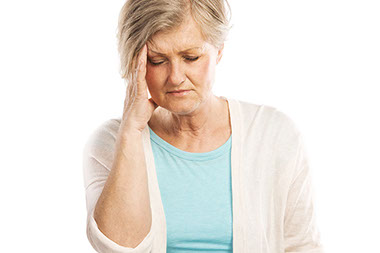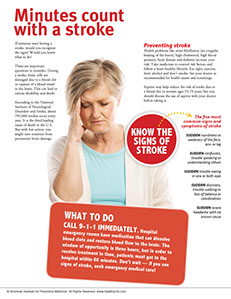MEDICAL NEWS
Minutes count with a stroke

If someone were having a stroke, would you recognize the signs? Would you know what to do?
These are important questions to consider. During a stroke, brain cells are damaged due to a blood clot or rupture of a blood vessel in the brain. This can lead to serious disability and death.
According to the National Institute of Neurological Disorders and Stroke, about 795,000 strokes occur every year. It is the third leading cause of death in the U.S. But with fast action, you might save someone from permanent brain damage.
Preventing stroke
Health problems like atrial fibrillation (an irregular beating of the heart), high cholesterol, high blood pressure, heart disease and diabetes increase your risk. Take medicines to control risk factors and follow a heart-healthy lifestyle. Eat right, exercise, limit alcohol and don’t smoke. See your doctor as recommended for health exams and screenings.
Aspirin may help reduce the risk of stroke due to a blood clot in women ages 55-79 years, but you should discuss the use of aspirin with your doctor before taking it.
Know the signs of stroke
The five most common signs and symptoms of stroke:
• SUDDEN numbness or weakness of the face, arm or leg
• SUDDEN confusion, trouble speaking or understanding others
• SUDDEN trouble seeing in one or both eyes
• SUDDEN dizziness, trouble walking or loss of balance or coordination
• SUDDEN severe headache with no known cause
What to do
Call 9-1-1 immediately. Hospital emergency rooms have medication that can dissolve blood clots and restore blood flow to the brain. The window of opportunity is three hours, but in order to receive treatment in time, patients must get to the hospital within 60 minutes. Don’t wait — if you see signs of stroke, seek emergency medical care!

Download an offline pdf file.
MEDICAL NEWS ARTICLES
<
>
2021 © American Institute for Preventive Medicine - All Rights Reserved. Disclaimer | www.HealthyLife.com








